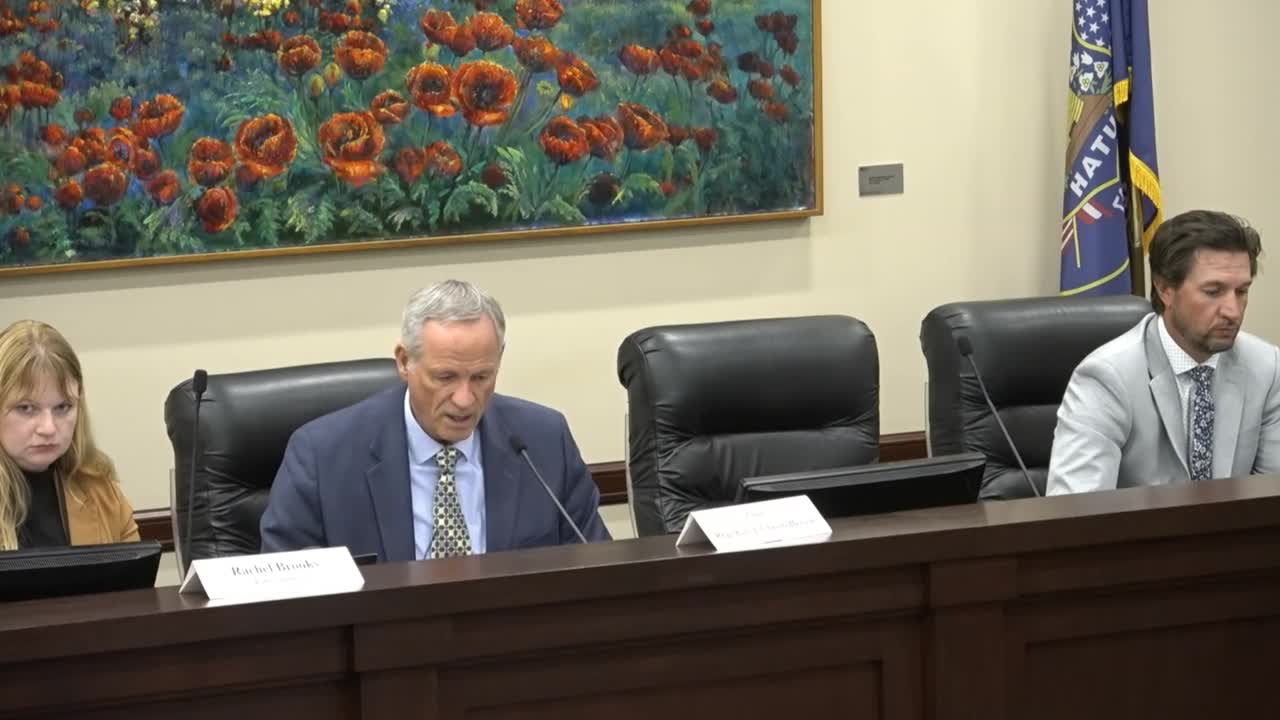Citizens propose ambitious Rio Grande plan to revitalize downtown
September 18, 2024 | Utah Interim, Utah Legislative Branch, Utah
This article was created by AI summarizing key points discussed. AI makes mistakes, so for full details and context, please refer to the video of the full meeting. Please report any errors so we can fix them. Report an error »

In a recent government meeting, advocates for the Rio Grande Plan presented a vision to revitalize downtown Salt Lake City by relocating the existing train station closer to the city center. The proposal, introduced by residents Frederick Jenny and Christian Lenhardt, aims to transform the current Salt Lake Central Station, which is situated a quarter mile from downtown, into a more accessible hub by moving the railroad tracks underground.
The plan seeks to create a cut-and-cover tunnel beneath 500 West, which would free up approximately 75 acres of rail yards for redevelopment. This initiative is designed to enhance walkability, improve access to downtown, and facilitate better connections to other modes of transportation, including the FrontRunner commuter service. The advocates emphasized that the current configuration of the station limits ridership and accessibility, as evidenced by the higher usage of North Temple Station.
The Rio Grande Depot, a historic structure currently undergoing a $50 million renovation, is central to the proposal. Advocates argue that utilizing this depot as a transit hub aligns with the state's commitment to revitalizing downtown and preparing for future events, such as the upcoming Olympics. They highlighted the need for a grand train station that meets international standards, akin to those in cities like Paris and New York.
Support for the plan has been growing, with preliminary backing from the Salt Lake County Council and ongoing discussions with community councils. However, concerns were raised during the meeting regarding the project's estimated cost, which could reach up to $5 billion, and the potential impact on freight transportation. Some representatives expressed skepticism about prioritizing such a large investment in Salt Lake City when other areas of the state also require transit improvements.
The advocates called for an official economic impact study and emphasized the availability of federal funding for infrastructure projects. They argued that the Rio Grande Plan represents a grassroots solution to address the housing crisis, air pollution, and the need for improved public transit in the region.
As discussions continue, the future of the Rio Grande Plan remains uncertain, with stakeholders weighing the benefits of a centralized transit hub against the financial implications and the needs of the broader state.
The plan seeks to create a cut-and-cover tunnel beneath 500 West, which would free up approximately 75 acres of rail yards for redevelopment. This initiative is designed to enhance walkability, improve access to downtown, and facilitate better connections to other modes of transportation, including the FrontRunner commuter service. The advocates emphasized that the current configuration of the station limits ridership and accessibility, as evidenced by the higher usage of North Temple Station.
The Rio Grande Depot, a historic structure currently undergoing a $50 million renovation, is central to the proposal. Advocates argue that utilizing this depot as a transit hub aligns with the state's commitment to revitalizing downtown and preparing for future events, such as the upcoming Olympics. They highlighted the need for a grand train station that meets international standards, akin to those in cities like Paris and New York.
Support for the plan has been growing, with preliminary backing from the Salt Lake County Council and ongoing discussions with community councils. However, concerns were raised during the meeting regarding the project's estimated cost, which could reach up to $5 billion, and the potential impact on freight transportation. Some representatives expressed skepticism about prioritizing such a large investment in Salt Lake City when other areas of the state also require transit improvements.
The advocates called for an official economic impact study and emphasized the availability of federal funding for infrastructure projects. They argued that the Rio Grande Plan represents a grassroots solution to address the housing crisis, air pollution, and the need for improved public transit in the region.
As discussions continue, the future of the Rio Grande Plan remains uncertain, with stakeholders weighing the benefits of a centralized transit hub against the financial implications and the needs of the broader state.
View full meeting
This article is based on a recent meeting—watch the full video and explore the complete transcript for deeper insights into the discussion.
View full meeting

